Co-Production in Arts & Culture: A Review of Evidence

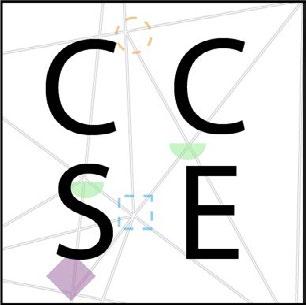


ISBN Print Book: 978-1-903978-72-6
ISBN e-Book: 978-1-903978-73-3
Acknowledgements
Written by Marlene Zijlstra, Dr Sophie Mamattah & Prof David McGillivray (Centre for Culture, Sport and Events at UWS), this review is part of a suite of tools and resources developed for use across the activity taking place within the Framework of Future Paisley.
Future Paisley is a programme of cultural events and activity drawing on Paisley and Renfrewshire’s unique and internationally important story. The programme uses targeted investment to deliver positive change and, places culture at the heart of Paisley and Renfrewshire’s regeneration.
March 2024
2

Contents 1.0 Introduction & Methodology ....................................................... page 6 1.1 Co-production: The Emergence of a Concept ............................................ page 8 1.2 Realms and Applications of a ‘Malleable’ Concept ................................... page 8 1.2.1 Co-Production, Adjacent Concepts and Degrees of Participation page 9 1.2.2 Co-Production or Co-Design? page 10 1.2.3 Co-Production or Co-Creation?....................................................................... page 10 2.0 The Arts and the Practice of Co-Production ................................ page 13 2.1 Examples of Co-Production in the Arts .......................................................... page 14 2.2 Co-Production supporting Cultural Hubs and Arts-led Approaches in Paisley .......................................................................... page 17 2.2.1 The Paisley Museum page 18 2.2.2 The Sculpture House page 20 3.0 Some Concluding Remarks and Recommendations ..................... page 24 4.0 References ................................................................................. page 26
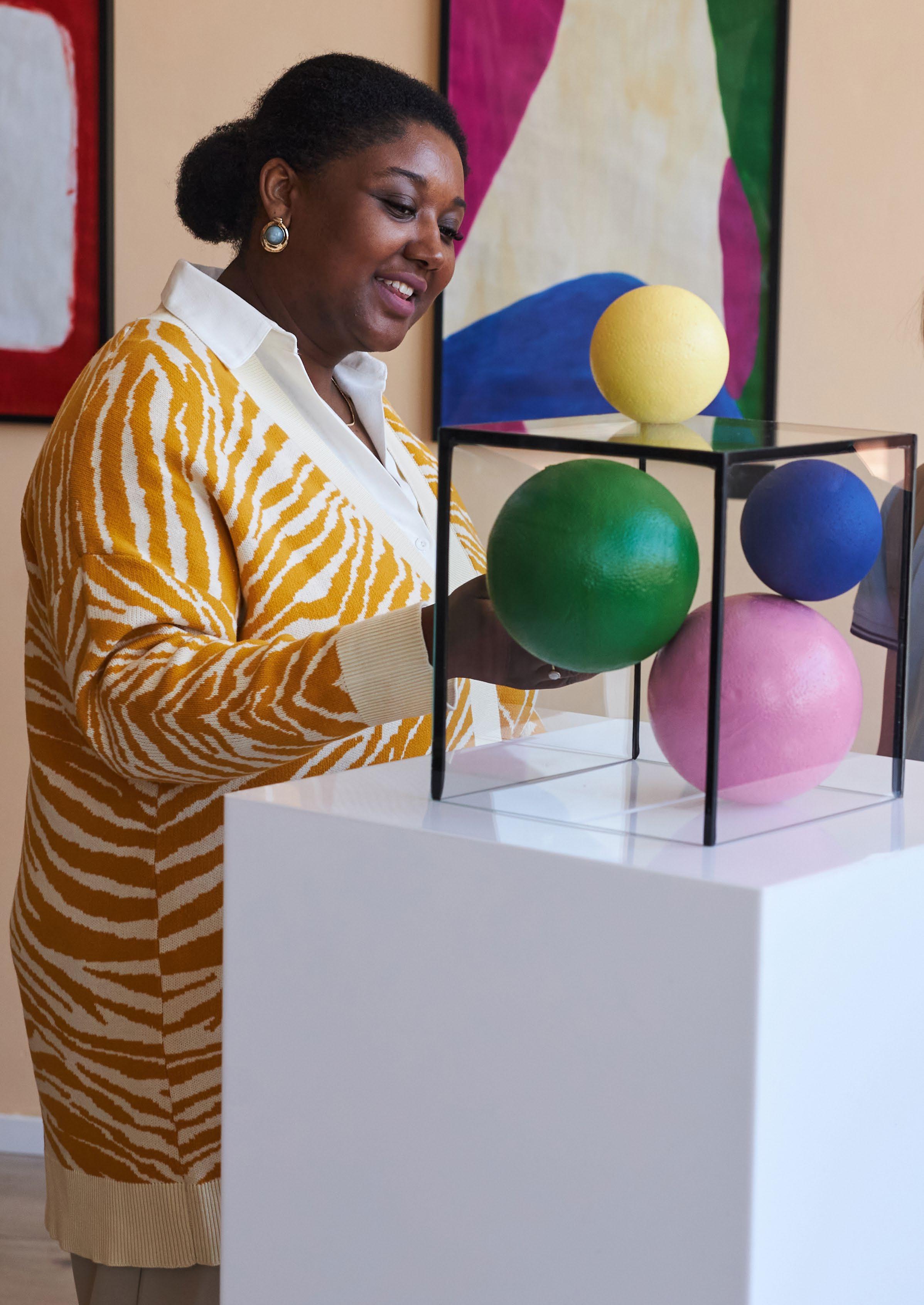
4

1.0 Introduction & Methodology
5
1.0 Introduction & Methodology
This review of evidence explores the notion and potential of co-production in the art and cultural sectors. To approach this task, keyword searches were conducted using the term co-production alongside, co-production AND museum, co-production AND exhibition, co-production AND culture, co-production AND arts. This returned both academic and grey literature of relevance. These documents were reviewed and – where appropriate – the reference lists appended to these sources were scrutinised for more, relevant material. To discover practical examples of its usage in social, arts and cultural settings, the term co-production was then entered into a more generalised internet search. It soon became apparent that co-production as an idea is both poorly defined (leading to conflation or interchangeable use with other similar terms and ideas) and yet, used widely across a range of social, cultural, public service and policy areas. Furthermore, while the arts have been recognised as having great potential for increasing stakeholder engagement through co-production practices, there are significant differences in how the arts are operationalised across different contexts. As noted by MacGregor et al. (2022), co-production through the arts can be influenced by the relationship between researcher and stakeholder, ethical issues with collaboration, approaches to stakeholder engagement, the balance in the co-production of knowledge, capacity-building resources and the communication between multi-stakeholder partners (MacGregor et al., 2022:206).
In this review, we explore some definitions of co-production and adjacent concepts, noting that coproduction can be differently understood by different stakeholder groups (e.g. Brandsen et al. 2018; Voorberg et al. 2015) and, that the degree to which citizens or community members are enabled to participate in the production of an outcome can vary widely (e.g. Brandsen et al. 2018). Examples of co-production in the arts and cultural space that emerge from the literature are given. These underscore the variety of practices and approaches that might be considered as co-production. Brief summaries of two of the projects contributing to the Future Paisley programme of cultural regeneration follow. These projects (both ongoing at the time of writing) have aimed to foreground co-production as a key tenant of the approach taken.
We hope that this review provides insight into the range of practices considered as co-production – ranging from tokenistic to citizen-led. It can be seen that awareness of co-production (and adjacent concepts such as co-creation) has increased but that terms are often conflated and used interchangeably (e.g. Voorberg et al., 2015:1347). The utility of examining some of the differences more closely lies chiefly in the ‘benefits for comparability of empirical findings’ that a more nuanced insight offers (Brandsen et al. 2018:7). Further, there are practical benefits to those stakeholder groups engaging in co-production type collaborations if all parties are clear regarding the extent of their engagement from the outset.
6

7
1.1 Co-production: The Emergence of a Concept
Co-production first emerged as a concept in the 1970s through the writings of economist Elinor Ostrom. Ostrom’s work with colleagues foregrounded the acknowledgement of the role of consumers and service users in the delivery of services and outcomes. They noted that ‘partly in response to fiscal pressures, and partly due to evidence regarding the inefficiency of their own unaided efforts, some public producers are increasing consumer involvement in service production’ (Parks et al. 1981:1001). This represented a transformative shift in understandings of how public goods are created and maintained. Co-production is a concept that challenges traditional top-down models of service delivery, and underlines the importance of the presence of citizens, communities, and stakeholders in shaping public goods that are lasting and sustainable. Examples of this include curb side waste collection and community anti-crime efforts (e.g. Neighbourhood Watch), both of which showcase the analytical emphasis on service delivery (see: Parks et al. 1981:1001). Emerging from this work, co-production is defined as ‘a process though which inputs used to produce a good or service are contributed to by individuals who are not “in” the same organisation’ (Kershaw et al. 2017:20 citing Ostrom, 1999). Ostrom’s work highlights the unique local knowledge, motivations and capacities that are possessed by communities that can enhance the quality and efficacy of service delivery when harnessed in a collaborative manner.
Over time, definitions of co-production have developed and diversified, along with the realms and their sequence of application (see, for example, Brandsen & Honingh, 2016). This is partially due to the dynamic nature of public service delivery and community engagement. While initially rooted in public administration and governance, co-production as a concept has expanded in definition and, its application extends to a far wider spectrum of collaborative efforts, which now includes arts and cultural spaces. In turn, we have also seen the emergence of similar, yet distinctive, concepts such as co-design and co-creation to denote different levels of engagement in service delivery.
At this stage, it is important to keep in mind two observations made by Brandsen et al. (2018:6-7). First, activity that stakeholders in one area of practice (e.g. public administration) identify as co-production (or co-creation) may be ‘called something else’ elsewhere when, in practice, ‘the same phenomenon’ is being discussed.1 Secondly, where ‘individual contributions to the public good are undeniably essential, extending co-production to cover all of them’ is unhelpful as this non-specific application serves only to stretch meaning to the point of uselessness (Brandsen et al, 2018:6).
1.2 Realms and Applications of a ‘Malleable’ Concept
Examples of the diversified application of ‘co-production’ are numerous. For instance, Minkiewicz et al. emphasise the embeddedness of co-production and ‘service-dominant logic, which asserts that consumers are value co-creators, and that value is created with, and determined by, the consumer and consumption process’ (Minkiewicz et al., 2016:749). By understanding co-production as a means of increasing efficiency and providing competitive advantage, this example concretely ties the practice of co-production to an economic and innovation perspective. In comparison, Eseonu and Duggan utilise the lens of co-production to describe ‘collaborative knowledge production between professionalised researchers […] and the public’, noting that definitions of the process ‘usually include process criteria and/or aims such as empowering participants, democratising research and realising social justice’ (Eseonu & Duggan, 2021:96). Rather than prioritising market logic, this example emphasises a governance perspective, where the role of citizens as active participants is key to delivering effective public services and the focus lies on mutual knowledge exchange as an important marker for considering initiatives and projects as ‘co-produced’.
8
See Brandsen et al., (2018:7). Also see Brandsen & Honingh, (2018:9) and Voorberg et al (2015:1336) who note that terms such as collaborative governance, co-management, public participation and interactive governance are often proxies for co-production / co-creation.
1
Co-production has also gained a foothold in the cultural and social fields. For instance, Oliver et al. (2022) discuss the role of co-production in community heritage research and, Boonyabancha and Kerr (2018) examine the aspects of co-production, housing and community development in poor regions of Thailand (also see: Wright et al. 2012).2 Warren (2014) looks at co-production through the lens of volunteering and place-making in the culturally significant setting of the Yorkshire Sculpture Park. By employing participatory arts practice and allowing communities and grassroots organisations to have a hand in shaping their own local realities; here co-production is used as an empowerment tool and, a means to foster collective responsibility and self-determination. On the one hand, its wideranging application has helped to showcase the importance of collaborative efforts in all aspects of society, it is nevertheless to be noted that the ambiguity surrounding the concept of co-production has muddied the waters in terms of assessing impact and effectiveness (e.g. Brandsen & Honingh, 2016). For instance, Filipe et al. (2017) present a view from a healthcare perspective (also see: Hyde & Davis, 2004), while making the prescient observation that ‘[d]espite an apparent consensus around the potential of co-production, it is not always clear what counts as or what is meant by “coproduction,” what it entails in practice or what it is that is being co-produced’ (Filipe et al., 2017:1. Also see: Loeffler & Bovaird, 2016; Voorberg et al. 2015).
1.2.1 Co-Production, Adjacent Concepts and Degrees of Participation
Despite the ambiguity surrounding application and measuring impact, the notion of co-production significantly overlaps with other concepts in the field of participatory practice; these include codesign (see: Lam et al., 2017) and co-creation (see: Luonila & Jyrämä, 2020; Voorberg et al., 2015 for discussion). All three concepts centre around the practices of collaboration, participation and active involvement of a diverse set of stakeholders. In practice, this conflation (also see: Brandsen et al., 2018) can be seen where organisations such as Co-Creating Change, a network and programme focussed on investigating how artists, cultural organisations and communities can co-create change, offer a definition of co-creation which informs their approach. Their working definition for co-creation has much in common with how practitioners might seek to think about co-production; highlighting as it does, the potential that the collaborative process offers to diversity input and devolve power to community members.3 Their note that they ‘fully expect’ that this definition will change is also illuminating with regard to the malleability of understanding and application of the notion of coproduction and, the crossover with adjacent terms.
Notions of social inclusion, access and participation also intersect with that of co-production. As Miles and Gibson note ‘the logics of the ‘social inclusion’ narrative within cultural policy and across cultural practice have recently been extended through discourses of ‘access’ and ‘participation’ [and] into collaboration, co-production and co-curation’ (Miles & Gibson, 2016:151, Also see: Oliver et al., 2022 and Voorberg et al., 2015:1343). The question of degrees of involvement emerges strongly as an issue which must be considered by those wishing to embark on a path towards co-production, cocreation or co-design. For example, Kershaw et al. (2020) describe higher and lower order activities that may comprise co-production. Lower order activities are built around ‘the community receiving instructions to produce services that the government decides, and act to maintain the distance between organisation and user,’ Kershaw et al. (2020) label this type of co-production ‘tokenistic’.
2 There are numerous practical examples of a co-production/ co-creation approach taken to community development. For example, Homebaked, is a Liverpool based Community Land Trust using bread-making, bakery and other creative approaches to support local regeneration whereby ‘regenerating our high street ‘brick by brick and loaf by loaf’, [Homebaked] will be using money spent in the neighbourhood to benefit [local] communities.’ See: https:// homebaked.org.uk/about-us/. Co-Creating Change is a network and programme focused on ‘explor[ing] the role which artists, cultural organisations and communities can play to co-create change together around the UK and beyond.’ See: http://www.cocreatingchange.org.uk/about/
3 The definition used is: Co-creation is a co-operative process in which people with diverse experiences, skills and knowledge come together and work in non-hierarchical ways to address a common issue, and which enables people and communities to be actively involved in shaping the things which impact their lives. It shifts power, resource and ownership towards the people the work is intended to benefit, as opposed to the traditional ‘top down’ approach. It encourages every individual to activate their creative potential and realise their own ability to make change. See: http://www.cocreatingchange.org.uk/ about. Also see: Brandsen et al. (2018:3) where co-production and co-creation are (initially) assigned the same rough definition.
9
On the other end of the scale, higher order forms of ‘citizen power’ co-production revolve around collaborative and partnership approaches, devolving power to citizens to agree and create public services (Kershaw et al., 2018: 20-1. Also see: Tamma & Artico, 2015; Kershaw et al., 2020).4 It is necessary to be mindful of the power imbalances in collaborative efforts (Bovaird & Löffler, 2012). Imbalances in influence, resources or decision-making can negatively affect participatory outcomes. Other areas of risk include constraints of resources (limiting the engagement in co-production efforts) (Brandsen & Honingh, 2016), resistance to change (whereby a loss of control, or a fear of reduced efficiency can impede on the participatory process) (Brandsen & Honingh, 2016; Osborne & Radnor, 2016), or the lack of accountability (whereby it becomes unclear who bears responsibility for what) (Emerson et al., 2012), are but a few examples here. These framings echo Arnstein’s formulation of participation as a ladder where only the top rungs are reflective of citizens undertaking a significant decision-making role (Arnstein, 1969 in Guillard & McGillivray, 2022:130). More commonly, participation is characterised by civic paternalism and stewardship whereby institutional actors ‘retain control over decision-making processes, while engaging with citizens through informing and consultation’ (Guillard & McGillivray, 2022:130).
1.2.2 Co-Production or Co-Design?
Tokenistic type co-production can be more specifically associated with the practice of co-design, where stakeholders are asked to participate in a very specific part of the service delivery process (namely the generation of ideas of implementation). In co-design, the ‘locus of control’ remains in the hands of service providers rather than being devolved to service users. Co-design is primarily concerned with applying participatory practice to only one phase of the service delivery process. Engagement often ends once the design process is completed, and users’ involvement is confined to a more ‘consultative’ role. For co-design to be successful, it is essential to foster clarity regarding the extent to which service users are meaningfully engaging throughout the process of service delivery (Moll et al. 2020:1).
1.2.3 Co-Production or Co-Creation?
Co-production and co-creation have differing practical applications (and occupy differing rungs on Arnstein’s ladder). While both terms mean roughly the same and, indicate direct5 service user participation in the production process, (Brandsen et al. 2018:12) there are some distinct differences between them which should be acknowledged. While co-production emphasises service user involvement in the delivery of a service/ implementation (and, as such, may be considered as inalienable (see: Brandsen et al. 2018; Porter, 2012) or even – at times – involuntary (see: Osbourne et al. 2013)), co-creation spotlights involvement in fundamental decision-making processes and the fulfilment of tasks that have proximity […] to the core services of the organisation’ (Brandsen et al., 2018:14).
1.2.4 The (Co-) production of Value
When employed, co-production has been found to enhance the outputs or products resulting from the process. Notably, the value created through the process of co-production is also no longer solely determined by producers or service providers. Instead, value in the practice of co-production is partially generated through the process of collaboration itself.6 Consumers or service users become active participants, adding value to products and services. Hence, the concept of the co-creation of value represents a significant shift in how value is understood and delivered, as co-production accounts for the idea that consumers are active participants in the value creation process.
Co-production of value emphasises that it is important to engage customers or service users as partners rather than seeing them merely as passive recipients. The collaborative creation of value also provides the opportunity to enhance customer satisfaction, foster innovation, and
5 ‘Direct’ in this case refers to citizens being able to change the service individually provided to him or her by their participation (Brandsen et al., 2018).
10
6 Concomitantly, this may help to explain why in may studies of co-production involvement in the process is seen as a virtue in itself and, there is little, or no, focus on outcomes in the vast majority of analyses (Voorberg et al. 2015:1341).
drive competitive advantage in today’s marketplace. In this ‘new’ paradigm, the quality of the collaborative experience can be seen as, as – or more – significant than the offer or service that eventually derives from the process (Prahalad & Ramaswamy, 2004). The value created is both ‘perceived and determined’ by the customer [service user] on the basis of ‘value in use’ to them as a participant in this process (Vargo & Lusch, 2004). Kershaw et al. (2020:346) observe that, within the public sector, co-production ‘is associated with the delivery of value into the public domain.’ However, their work exploring co-production in the Australian museum sector shows that value can go unrecognised or is differentially recognised. These authors found that while the benefits accrued to museums through co-production were emphasised by study respondents, ‘the benefits of coproduction for communities […] received limited attention and the value of co-production for third party museum visitors was largely overlooked’ (Kershaw et al. 2020:350). One reason for this may lie in the tendency among museum staff not to recognise the potential value of aspects of co-production (e.g. as a participatory process) which, in turn, community members found to be the most interesting or engaging element of the collaborative process (Kershaw et al., 2020:353).
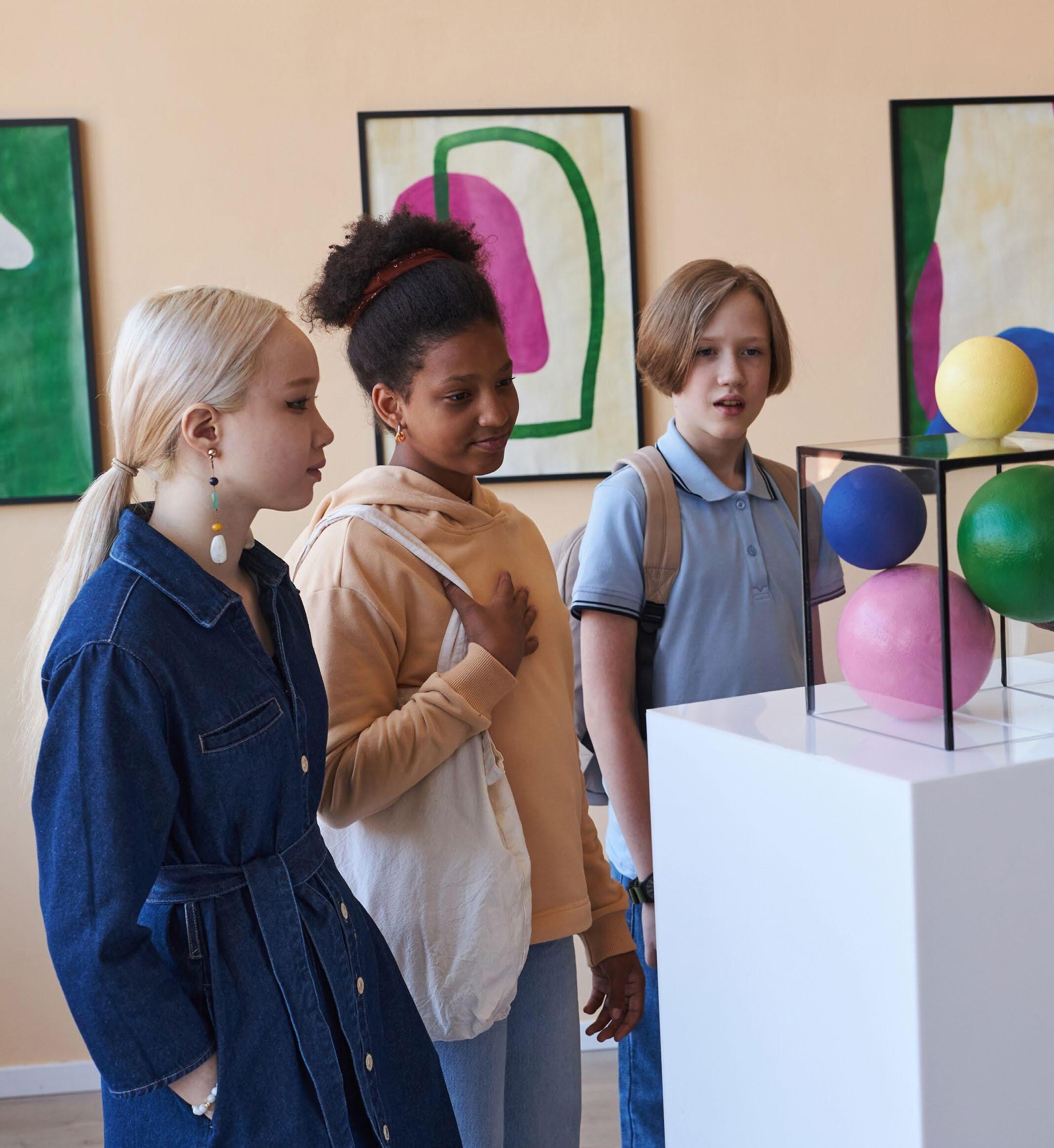
11

12

2.0
The Arts and the Practice of Co-Production
13
2.0 The Arts and the Practice of Co-Production
In this section, specific consideration is given to applications of co-production in artistic and cultural settings (particularly museums, heritage and arts) and cultural approaches. Firstly, the question of why co-production has become an increasingly prominent device in the toolkit of officials, stakeholders and curators working in this field of practice is briefly considered. Subsequently, examples of the ways in which co-production is undertaken in practice in such settings are presented. This reveals a wide spectrum of activities that have been considered as co-production in practice but, which are reliant upon different degrees and depths of engagement and could in some instances more appropriately be labelled as processes of co-design or co-creation.
As Tamma and Artico (2015) note, for a number of years ‘museums have been pushed to adopt a range of strategies to cope with an increasingly challenging environment […]’ underlining ‘the need to respond to social demands and better relate with territory and communities, new thinking and [the development of] management practices. Though interest in co-production had waned since its conceptual development in the 1970s, current operating circumstances have contributed to a revival of interest in the idea. As Kinoshira et al. highlight, the attractions of co-production include the ‘potential for cost reduction in service delivery and a reinvigoration of the role of citizens in their communities’ to involvement that goes beyond the prosaic paradigms of consumer, service user or voter (Kinoshira et al., 2020:172-3; also see: Ryan, 2012; Warren, 2014; Kershaw et al., 2020).7 To negotiate a strategic landscape in which it is necessary ‘to attract a more diverse audience with [fewer] resources, placing much more pressure on internal allocation of funds’ (Minkiewicz et al. 2016:756; also see: Warren, 2014), co-production is viewed as a potentially useful tool; one which helps museums ‘seeking other ways of working, including building relationships with stakeholders, and creating a mixed economy of public and private collaboration’ (Tamma & Artico, 2015).8 On the other hand, as the Caloustine Gulbenkian Foundation (CGF) observes, engaging in higher level forms of ‘co-production means not knowing where the work might go at the start [yet] funders tend to want greater certainty.’ Moreover, the project funding model is not well suited to ‘sustain[ing] valuable work in the community and, conventional evaluation techniques often sit uncomfortably with the nature of the work and its ethos’ (CGF, 2019:60).
The ways in which museums (and similar cultural institutions) might choose to collaborate with members of their communities is broad ranging and various, this is acknowledged in Kershaw et al.’s succinct definition as co-production in a museum setting as ‘museum practice conducted jointly with communities’ (Kershaw et al. 2017:22). The available literature demonstrates the variety of approaches and potential benefits, alongside challenges.
MacGregor et al. note that there is a growing literature discussing arts-informed approaches in research and practice (for example: McNiff, 2008; Blaikie, 2013), despite a lack of systematic and consolidated learning about its use and effectiveness (MacGregor et al., 2022). Hence, coproduction is not just a process to be used by a cultural institution or body, it also connotes a multitude of different skills and skillsets enhanced through the practice of collaboration. This means that approaches and processes to engage with the topic of co-production can exhibit significant differences in adjacent artistic practices/forms (e.g.: visual arts, performance, dance/folk art).
There are various ambiguities relating to the process of co-production in the arts specifically. In an examination of the trajectory of participatory art in the 20th century, Bishop (2012) argues that there is a significant shift whereby the audience has transitioned from ‘viewer’ to ‘co-producer’. This can result in a blurring of artistic roles, where the identities of ‘artist’, ‘producer’ and ‘curator’ become more diversified (Bishop 2012:3). This diversification raises questions about authorship, ownership and the centre of creative control. As such, Bishop observes that it has not been uncommon for the practice of participatory arts to be used as a framework through which governing bodies can seemingly
7 Davis makes a further distinction, noting that while the rationale for involving external parties in processes of production in some museums might be ‘part of the mission and is seen as the right thing to do in a multi-cultural and postmodern world,’ in other institutions ‘the rationale is more pragmatic […] involving external parties, in particular volunteers, to make the most of scare resources’ (Davis, 2010:315).
8 As Brandsen et al. (2018:4) point out, nowadays, it is also far easier to ‘interact with citizens [who comprise the audience for exhibitions etc.] both collectively and individually’ than has been the case previously.
14
surrender control, while still nevertheless maintaining power imbalances (Bishop, 2012). Similarly, in his book Bowling Alone, Putnam (2000) makes it clear that while co-production is an opportunity for all voices to be heard, this does not always imply that all voices are heard equally. Through her work The Participatory Museum (2019), Nina Simon has examined the balance struck between artistic vision and audience engagement. In this study, Simon asserts that there is shift to a position where museum staff view visitors as partners rather than consumers, subsequently there is a difference in the interaction between both parties (Simon 2019:262). A ‘co-creative relationship’ is developed, and measuring impact is achieved using rather ‘atypical’ but still measurable outputs and indicators (Simon 2019:303). Simon specifically mentions three steps in the evaluation of participatory projects, namely:
1. Stating your goals (i.e. give a sense of place, or fostering dialogue)
2. Defining behaviours and outcomes that reflect those goals (i.e. attracting and welcoming people with different views and offering opportunities for dialogue)
3. Measuring or assessing the incidence and impact of the outcomes via observable indicators (i.e. the range of comments or tone of comments) (Simon 2019:303-305).
Simon also notes that the process of co-production can muddy the water when it comes to evaluating ‘success and quality’.9 While traditional understandings of aesthetic quality have always been important as a measure of ‘art,’ co-production in the arts places more importance on the level of engagement and impact, which could make the artist feel as if the artwork produced needs to meet particular objectives to be considered as ‘successful’ in a participatory arts project (Simon 2019:264; Thompson 2008; Garrett-Petts et al. 2018). Lastly, while participants often make long-term commitments to participatory projects, there is no guarantee that institutions are amenable to longterm community partnerships. As such, it is difficult to ascertain whether co-production is sustainable as a long-term practice (Simon 2019: 325).
2.1 Examples of Co-Production in the Arts
The following presents some examples of the ways in which co-production has been operationalised in a number of artistic and cultural settings. These studies show the range of ways in which coproduction can be understood and interpreted in practice; the proximity/conflation of co-production and co-creation is also in evidence (e.g. Krimpotich & Anderson, 2005). In their exploration of the opening of the Nitsitapiisinni: Our Way of Life10 Gallery at Glenbow Museum, Krimpotich and Anderson present an analysis of ‘one of the first permanent galleries in Canada to be built using a fully collaborative approach’ (Krimpotich & Anderson, 2005:379). To create the exhibition, Elders from the Blackfoot First Nations worked alongside museum staff over a period of about 5 years from the mid1990s to exhibition opening in 2001. Citing Franco (1994), these authors identify ‘particular [potentially beneficial] outcomes of using personal experience as a communication device’. These are, audience preference for history prioritising the everyday; older generations are seen as ‘trustworthy sources of information about families and human experiences’ and, lastly, relating such experience aides understanding by helping exhibition ‘visitors bridge unfamiliar topics by using their own experiences or knowledge’ (Krmpotich & Anderson, 2005:386; also see; Kershaw et al. 2017). While their study relates an example of deep collaboration between members of the First Nation’s Blackfoot and museum staff, it is notable that the researchers identified a divergence of opinion between the two groups in terms of the exhibition goals and intended audience. While members of the Blackfoot tribe prioritised their own community, museum staff indicated that the exhibition was directed towards a more general audience to introduce Blackfoot culture and help gallery visitors to ‘connect the past with the present’ (Krmpotich & Anderson, 2005:384. Also see Kershaw et al., (2020) for discussion on how benefits experienced by community members can be un(der)-recognised by museum staff).
15
9 This chimes with finding that the literature on co-production contains only limited reportage of outcomes which, in turn, makes it difficult to draw conclusions with regard to the benefits of participating in such a process (Voorberg et al. 2015:1346).
10 https://www.glenbow.org/blackfoot/

16
In their research examining the efficacy of a co-production approach in museum settings, Thyne and Hede explore ‘the strategies used by two museums to manage their roles in co-production […] [and] how they manage, motivate and guide visitors though the co-production process’. (Thyne & Hede, 2016:1478). Here, the authors compare the experiences of visitors to two house-based museums dedicated to significant figures in New Zealand’s literary landscape, Katherine Mansfield and Janet Frame, exploring the ways in which the respective sites – Katherine Mansfield House & Garden11 and, 56 Eden Street12 engage visitors to co-produce their exhibition experience through differing evocations of authenticity. The museum dedicated to Mansfield relies upon indexical authenticity, built around displays of the author’s belongings and meticulous restoration. In contrast, 56 Eden Street utilises iconic authenticity (based around items ‘of the era’) to draw interest (Thyne & Hede, 2016). The reliance on ‘of the era’ pieces at 56 Eden Street means that visitors can take a literal handson approach to co-producing their visit. On the other hand, at the House and Gardens, Mansfield’s personal items are displayed behind glass partitions but ‘curator and guides encourage visitors to recognise the accuracy of the museum’s refurbishment and the energy associated with it and to feel the museum space’ (Thyne & Hede, 2016:1486). Visitors to both museums were – the authors propose – successfully engaged in a process of co-production whereby their visitor experience was a product of the curation of space and ‘their skills, knowledge, past experience, sense of nostalgia and, in some cases, it seems from their sense of devotion to the author’ (Thyne & Hede, 2016: 1488).
In her examination of co-production, volunteering and creative labour at the Yorkshire Sculpture Park (YSP),13 Warren (2014) examines the roles of volunteering as a philanthropic act contributing to the realisation of artistic endeavour and place-making. On the one hand, as the number of volunteers equal those of paid employees at YSP, they are clearly a crucial part of the Park’s existence and function in financially challenging times (Warren, 2014:279). On the other hand, there is an unmistakable hierarchy of labour whereby volunteers are asked not to discuss their own ideas with the artist with whom they are working. Rather, they are asked to follow instructions and complete manual tasks, leaving the cerebral/creative input to the artist alone. Despite this unequal relationship, Warren notes that this ‘did not equate to a sense of disenfranchisement for most.’ Instead, volunteers felt pride, luck and excitement for the opportunity to be involved in creating a work for a storied artist on an internationally renowned site (Warren, 2014:280-3). This example evinces co-production that is far more than tokenistic and, yet, which explicitly steps away from any correlation with co-design or cocreation, situating the voluntary workforce along the continuum of production – with quite involved participation – alone.
2.2 Co-Production supporting Cultural Hubs and Arts-led Approaches in Paisley
Examples of arts-led approaches that emphasise co-productive and community-based practice have been evident in a number of the projects included in and around Renfrewshire, Scotland, as part of the Future Paisley suite of culture and arts focussed investments. This funding approach, undertaken by the Local Authority in collaboration with local and national stakeholders, has prioritised arts and culture in a concerted attempt to make targeted investments to deliver positive change.14 The redevelopment of Paisley Museum and the establishment of the Sculpture House Collective have been among the most prominent examples of these efforts. Although still in the relatively early stages of their work/overall development at the time of writing, it is possible to examine and evidence some of the ways that those involved in bringing these projects to fruition have sought to engage and involve members of the wider community in a variety of aspects of each undertaking. 13
17
https://ysp.org.uk/
14 https://www.renfrewshire.gov.uk/futurepaisley
2.2.1 The Paisley Museum
The regeneration of the Paisley Museum is a significant project, reliant upon considerable financial investment, that has breathed new life into a longstanding cultural institution. The museum is located in the historic town centre, and is renowned for its rich collection of art, textiles and historical artefacts. Nevertheless, for the last decade the need to update the collection and modernise the approach taken to curation and presentation of the pieces it contains has been increasingly recognised (Paisley Museum Reimagined, 2023; Stewart, 2023; Nicol, 2023).
Effort was made to renovate and expand the museum as part of the ‘Paisley Museum reimagined project’, which is part of the wider transformation of Paisley’s town centre, spearheaded by Renfrewshire Council through the report, Paisley: The Untold Story. Updating the museum was part of the regeneration plan to bring more tourists and visitors to Paisley, while simultaneously engaging in collaborative workshops to involving the community in shaping the exhibitions inside the museum.
The regeneration of the museum has been made possible through a collaboration between Renfrewshire Council, the National Lottery Heritage Fund and other donors/partners.15 The approach taken has included architectural transformation – where the Victorian-era building was preserved, and a contemporary extension is being added. Alongside the new build, much attention is given to diversifying the museum collection and making it more accessible to a wider range of audiences.16 Furthermore, the museum is being reimagined as an educational and community hub; this has meant various interactions with focus groups to identify ways to make the museum accessible to all. For example, informational signposting and short films have been created in collaboration with local community groups (including school pupils, members of the Kairos Women+ group and New Scots from Syria), foregrounding their expertise and interests, and providing support to enable the realisation of exhibits and signposting reflecting these.17 This is a clear example of co-production/ co-creation, whereby community members have a means to offer input to change the process and output of the museum’s service delivery, while not being part of the initial establishment of the service process. The reworking of the museum has nevertheless created a space where history, art and culture converge, inviting visitors to learn about and further understand Paisley’s rich heritage.
Community contribution to the museum’s redevelopment was achieved in a variety of different ways.
• Project coordinators engaged in community consultation to gather input and feedback on the established regeneration plans. This approach involved public meetings, surveys and workshops where community members could share their ideas and opinions regarding the museum and its collection. Communities in this case had a consultative role, which implies a level of co-production rather than co-creation.
• Local artists were consulted and invited to collaborate with museum staff, contributing their ideas to questions of design and content.
• The museum has plans to develop educational programmes and initiatives in collaboration with local schools and educational institutions. The intention is to work in a way that means the museum aligns with the educational curriculum. As such, the output of the museum is expected to engage with the principles of co-creation.
• Effort has been made to collect oral local histories and, to incorporate these stories into the museum exhibits.
• Accessibility and inclusivity for people of all backgrounds and abilities have been central concepts underpinning the redevelopment work.
• Lastly, the project sought to collaborate with local community organisations and partners, to emphasise that the museum would be a shared community space for engagement with events and activities developed by the museum team.
15 The project is costing £45 million (Kenealy, 2023).
16 See: https://reimagined.paisleymuseum.org/about-paisley-museum/the-future/
17 Paisley Museum Community Gathering, Paisley Townhall, 22.11.2023. Examples of new exhibits include one drawing upon the Museum’s collection of Syrian glass which has been co-curated with members of the New Scot Syrian community.
18
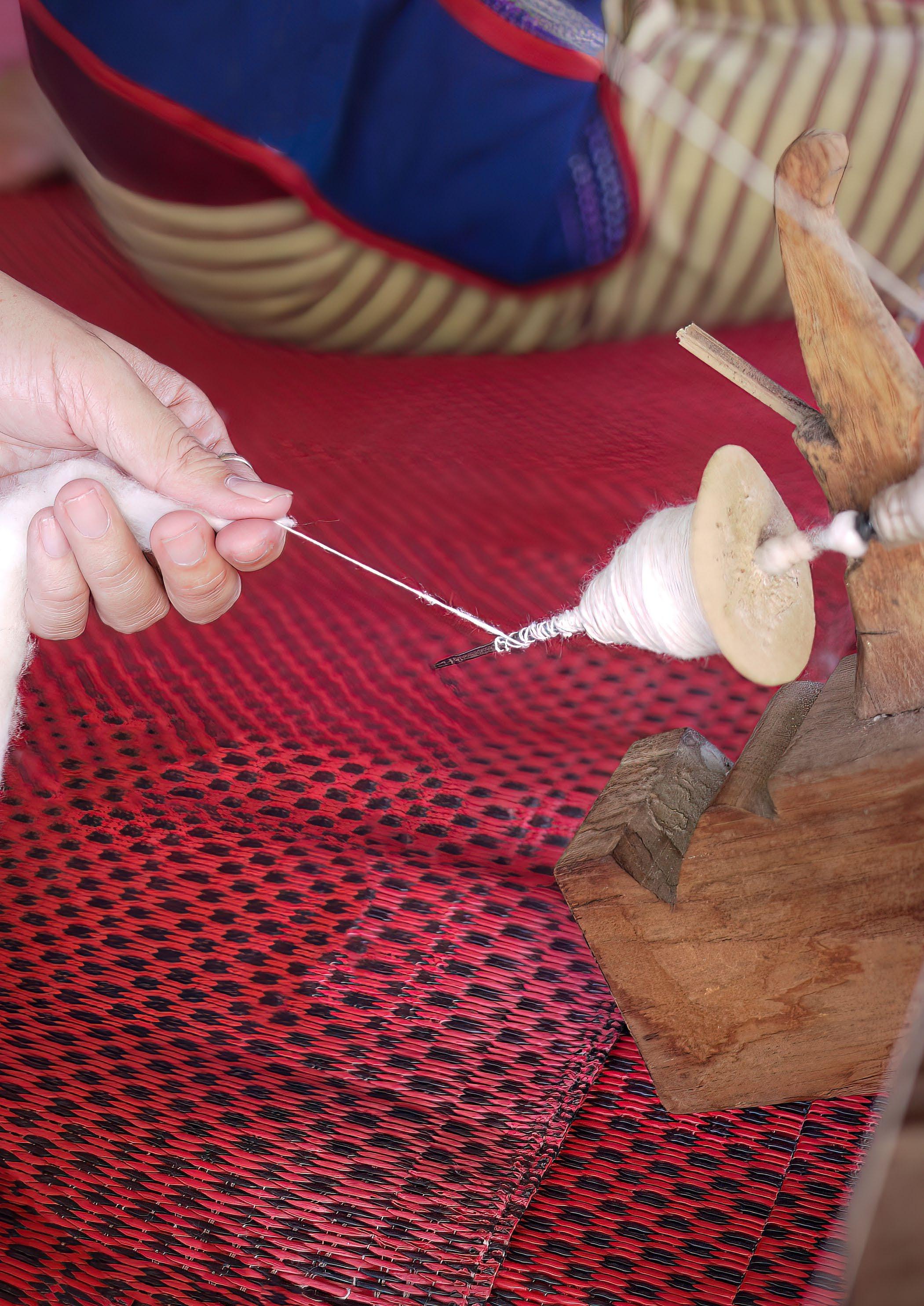
19
2.2.2 The Sculpture House
As part of the Future Paisley funded cultural investments across the local authority area, a disused building in the Ferguslie Park neighbourhood in Paisley has been transformed into a hub of creative arts practice. Formerly known as Craigielea House, the building on Blackstoun Road had previously been used as a social work office and had been vacant for a number of years (Thomas, 2023; McKay 2023). A trio of artists18 proposed the idea for the development of the Sculpture House. Their ambition was to create a new studio facility alongside a model of artistic practice, where ‘the community has access to arts and, new ways of working can be developed between professional artists and the wider community’ (Pengilly, 2023). A residential building was sought as the artists wished to emphasise and build upon the notions of home, a front room and familiar gathering space that a house contains and represents in the work to be undertaken there.19
The project’s initiators were seeking a space away from a typical warehouse-style studios, where artists are largely removed from the community and, where it is often challenging for an artist to retain a studio space for a longer time period (McKay, 2023). These circumstances gave rise to the idea that aligning artistic work with socially engaged practice might open the opportunity for artists to settle in a space where community engagement could be enhanced over the long-term (Pengilly 2023; McKay 2023). In essence, Sculpture House provides a space where co-creative processes determine what will be produced, and when. As artist, Laura Aldridge, observes, ‘that model of burrowing yourself away in your studio and then occasionally selling artworks for millions of pounds to very rich people . . . that’s just not how it works for most of us.’ Together with her fellow artists, Laura, also discussed feeling ‘cut off from the world’ in warehouse-type studio accommodation, and alienated by the unquestioned hierarchies of value whereby some artists see educational and community activities as secondary to making and selling work. For the Sculpture House artists this approach was ‘unhealthy and oldfashioned’ (Aldridge, in Thomas (2023)). After considering a number of potential sites, Craigielea House was chosen due to its proximity to a neighbourhood where a high degree of community engagement was already in evidence (see; Ferguslie Community Circus, the Tannahill Centre, The Making of Ferguslie Park).20
In 2022, with support from Future Paisley, the artists were able to take out a 20-year lease on the building. The lease agreement itself is unique, comprising a specified a peppercorn rent and a quota of cultural services to be provided by the house’s resident artists. The cultural services can take the form of – for example – active engagement and workshops, monthly open house tours, Sculpture House Socials alongside other aspects of SH business (e.g. marketing, fundraising, administration, building management). The outstanding rental amount is payable through the artists’ provision of a portion of their time to offer creative activities to locals and, maintaining the building itself21 (also see: Pengilly 2023; McKay 2023). As such, Sculpture House has become a physical signifier for the significant cultural regeneration that has been occurring in Paisley over the course of the last few years.
Through the Sculpture House endeavour, there is an opportunity to widen access to the visual arts.22 The building now contains studios, and spaces that can be rented out and used for creative workshops. In addition, parts of the house have been created and restored by the collaboration of community groups (examples include stained glass windows, benches and coat hangers in the hallway). As co-founder - Laura Aldridge - observes, ‘[w]e want the House to become a record of the things people do here and the gifts they give us, so they can walk past and say, ‘I made that” (Thomas, 2023).
18 Laura Aldridge (https://www.lauraaldridge.co.uk/), Nick Evans (https://www.nickevansartist.co.uk/) and James Rigler (http://jamesriglerstudio.com/) are all based in and around the greater Glasgow area.
19 Correspondence with Katie Nicoll, 29.01.2024.
20 see: https://www.communitycircus.co.uk/; https://fpha.org.uk/the-new-tannahill-centre/ and, https://www.renfrewshire.gov.uk/media/13968/Makingof-Ferguslie---Final-Report/pdf/The_Making_of_Final_Report.pdf?m=1637921927747
21 Correspondence with Katie Nicoll, 29.01.2024.
22 https://sculpturehousecollective.com/about/
20
Further, the ways in which artists and local community members have worked together in the space to make and finesse spaces has contributed to the creation of a sense of homeliness, warmth and shared purpose:
‘The first creative project at Sculpture House involved seven students from The Prince’s Foundation Building Arts course, which teaches traditional craft skills. Joanne Dawson’s beautiful front porch is one result of this, while Oliver Pitt and Lara Preiti made a stunning stained-glass surround for the interior entrance. It’s not just visiting craftspeople who have made the space feel like home, though.
The Pals of The Privies’ pre-teen ‘adventure group’ have moulded little glazed ornaments for the spots above the coat hooks. Eventually, the team hope the house will be full of things made by local people. The light-filled front room is free for nearby residents to book and is already in regular use, as are the ceramics studio and kiln room behind it’ (Thomas 2023).
Currently, Sculpture House provides studio space for eight artists, who work on independent commissions as well as contributing to the workshops given at the house itself. Cultural Regeneration Lead Officer for Future Paisley, Katie Nicoll, noted that,
‘[t]he ambition is to transform Craigielea House into a community asset that delivers accessible creative activities for the community while [also] being a sustainable base for artists to thrive in Renfrewshire. This aligns with Future Paisley’s ambitions to make this an attractive place for artists to work and increase opportunities for the community to engage and participate in cultural activities’ (Pengilly 2023; McKay 2023).
To realise this ambition, Sculpture House has placed education and outreach at the heart working practices, workshops and exhibitions are offered with the intention that they serve as bridges between the artists and the community. In addition to ongoing piloting of activities, future progress is to be decided in close consultation with local residents. This new set-up between the Council and artists spaces is working towards building a sustainable and resilient creative economy in Renfrewshire, that can – it is hoped – serve as an example for other similar projects across Scotland (McKay, 2023). Further, this approach has begun the process of transforming the rather negative area reputation of Ferguslie Park, attracting more visitors to, and footfall through, the neighbourhood. In this way, it can be seen that Sculpture House is actively contributing to the regeneration of the neighbourhood, one workshop at a time. In addition to other activity, capital bids for restoration work are in the pipeline, but people from Ferguslie Park will remain central to all plans for Sculpture House. ‘We’re not looking to own this building,’ states Aldridge, rather ‘[w]e’re developing a community asset which we hope will be here for a long time’ (Thomas 2023).
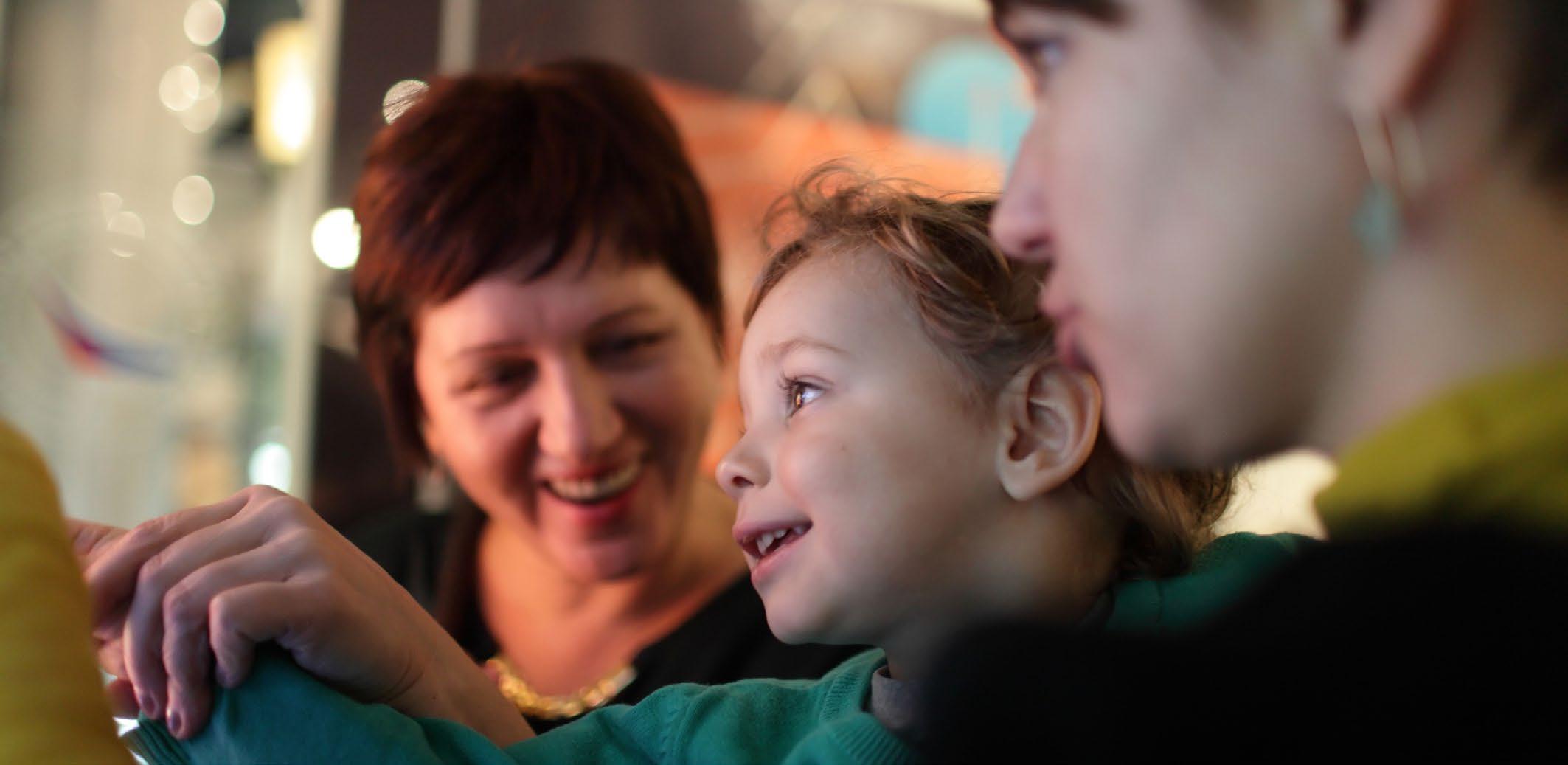
21

22

3.0
Concluding Remarks and Recommendations
23
3.0 Concluding Remarks and Recommendations
‘Does [co-production], for example, include listening to visitor feedback and borrowing objects, or should it only be applied to deeper forms of collaboration, such as when groups outside the museum select objects for display or help to define the museum’s exhibition policy?’
(Davis, 2010:306-7).
Davis’s quote (above) reflects the fuzziness that can be seen to cloud understandings of coproduction and adjacent concepts. As Brandsen and Honingh observe, an element of the ‘appeal of such terms [lies] […] exactly in that fuzziness, in innate goodness (who can be against any of it?) combined with a supple application to diverse phenomena’ (2018:9). On the other hand, more precise understanding of what constitutes co-production and, how this differs from co-design or co-creation, is of utility. This is particularly so when it comes to drawing useful comparisons between empirical findings (e.g. Brandsen et al., 2018). Having a clearer idea of the type – and therefore extent – of engagement that stakeholders (both members of an institution and members of the community they hope to collaborate with) will have benefits for the activity to be undertaken. Enabling clear comprehension of the extent and impact of planned involvement will serve to manage expectations and, maximise outputs/the chances of positive end product or yield. Exactly how funding models might be shaped to support good outcomes and, accordingly, which means of assessing the impact(s) of initiatives built around the co-production ethos are most appropriate is a matter that funders (and “fundees”) would benefit from considering closely and carefully.
It is notable that in the review of literature they carried out, Voorberg et al. found that a) terms such as co-production and co-creation are often used interchangeably (2015:1335) and b) the fact of a coproductive approach having been attempted is seen as a virtue in and of itself; expected outcomes and relative success in these are rarely interrogated. This, in turn, makes it difficult to draw conclusions regarding the benefits of utilising such approaches (2015:1346). Arguably, in spite of the tendency to focus on co-production, co-creation may offer more to stakeholders/ practitioners and, may be a more accurate description of what is happening; certainly, the proximity of community to decisionmaking in Future Paisley’s Sculpture House programme is more indicative of co-creation than coproduction. Further, elements of the Museum work – e.g. the film making undertaken with community members – is also, strictly speaking, mor co-creative than ‘merely’ co-productive. In contrast to co-production, genuine co-creation extends the potential space available for negotiation between (for example) council officers/ museum curators and the community members they are seeking to engage. Co-creation is a platform that increases levels of agency (through devolution of decisionmaking capacity) and, (arguably) enhances best practice overall.
While the nuance of differences between co-production, co-creation and, co-design may well be of more interest to area scholars, in the real world these points of difference are worth considering for projects and programmes engaging in co-productive type activity. Those looking to explore the efficacy of this approach in the arts and cultural sector should ask themselves:
• To what extent are participants outside the institution expected to engage?
• What level of power and/or control are we willing to cede to citizens, audiences or other participants in the co-production of artistic or cultural practices?
• What changes to funding models are required to facilitate and incentivise co-production and how is transparency and accountability for those funds managed when non-state actors are involved?
• How will we assess the success of co-production and over what timescales?
24

4.0 References
4.0 References
Bishop, C. (2012) Artificial hells: Participatory art and the politics of spectatorship, Verso, London. Available at: https://selforganizedseminar.files.wordpress.com/2011/08/bishop-claire-artificial-hellsparticipatory-art-and-politics-spectatorship.pdf
Blaikie, F. (2013) Navigating conversion: an Arts-based inquiry into the clothed body and identity, Visual Culture and Gender, 8, available at: https://tinyurl.com/yye2vnkt
Boonyabancha, S. & Kerr, T. (2018) Lessons from CODI on co-production, Environment & Urbanization, 30:2. DOI: 10.1177/0956247818791239
Bovaird, T., & Löffler, E. (2012) From engagement to co-production: The contribution of users and communities to outcomes and public value, Voluntas 23. DOI: https://doi.org/10.1007/s11266-0129309-6
Brandsen, T. & Honingh, M. (2018) Definitions of co-production and co-creation, in Brandsen, T., Steen, T. & Verschuere, B. (eds.) Co-production and co-creation: Engaging citizens in public services, Routledge, New York (2018). Available at: https://library.oapen.org/bitstream/id/186359f7-aac1-42e28aeb-7c28671869d5/9781138700116_text.pdf
Brandsen, T., & Honingh, M. (2016). Distinguishing different types of co-production: A conceptual analysis based on the classical definitions. Public Administration Review, 76(3), DOI: https://doi. org/10.1111/puar.12465
Brandsen, T., Steen, T. & Verschuere, B. (2018) Co-creation and co-production in public service: Urgent issues in practice and research, in Brandsen, T., Steen, T. & Verschuere, B. (eds.) Co-production and co-creation: Engaging citizens in public services, Routledge, New York (2018). Available at: https:// library.oapen.org/bitstream/id/186359f7-aac1-42e2-8aeb-7c28671869d5/9781138700116_text.pdf
Caloustine Gulbenkian Foundation (CGF) UK Branch, (2019), Rethinking relationships: Inquiry into the civic role of arts organisations, phase I report. The Gulbenkian Foundation, London. Available at: https://gulbenkian.pt/uk-branch/publications/rethinking-relationships/
Davis, S. M. (2010) The co-production of temporary museum exhibitions, Museum Management and Curatorship, 25:3. DOI: 10.1080/09647775.2010.498988
Durose, C., Beebeejuan, Y., Rees, J., Richardson, J. & Richardson, L. (2014) Towards co-production in research with communities. Connected Communities, available at: https://www.dur.ac.uk/resources/ geography/reframing_state/CCDiscussionPaperDurose2etal.pdf
Emerson, K., Nabatchi, T., & Balogh, S. (2012) An Integrative Framework for Collaborative Governance. Journal of Public Administration Research and Theory, 22(1), DOI: https://doi.org/10.1093/jopart/ mur011
Eseonu, T. & Duggan, J. (2021) Negotiating cultural appropriation while re-imagining co-production via Afrofuturism, Qualitative Research Journal, 22:1. DOI: 10.1108/QRJ-06-2021-0060
Filipe, A., Renedo, A. & Marston, C., (2017) The co-production of what? Knowledge, values, and social relations in health care. PLoS Biology, 15:5. DOI: 10.1371/journal.pbio.2001403
Garrett-Petts, W., Longley, A., Duxbury, N. (2018) Artistic Approaches to Cultural Mapping: Activating Imaginaries and Means of Knowing. Routledge. DOI: https://doi.org/10.4324/9781315110028
Ginzarly M. & Teller, J. (2021) Online communities and their contribution to local heritage knowledge, Journal of Cultural Heritage Management and Sustainable Development, 11:4. DOI: 10.1108/ JCHMSD-02-2020-0023
Graham, H. (2016) The ‘co’ in co-production: Museums, community participation and science and technology studies, Science Museums and Research, Spring 2016, DOI: http://dx.doi. org/10.15180/160502
26
Guillard, S. & McGillivray, D. (2022) Eventful policies, public spaces and neo-liberal citizenship: Lessons from Glasgow, Cities, 130. DOI: https://doi.org/10.1016/j.cities.2022.103921
Hyde, P. & Davis, H.T.O. (2004) Service design, culture and performance: collusion and co-production in health care, Human Relations, 57:11. DOI: 10.1177/0018726704049415
Kenealy, E. (2023) Ambitious plans for £45m Paisley Museum transformation revealed for first time, Daily Record, 4th April 2023 (updated 11th April 2023). Available at: https://www.dailyrecord.co.uk/inyour-area/renfrewshire/ambitious-plans-45m-paisley-museum-29618867
Kershaw, A., Bridson, K. & Parris, M. A. (2017) Encouraging writing on white walls: Co-production in museums and the influence of professional bodies. Australian Journal of Public Administration, 77:1. DOI: https://doi.org/10.1111/1467-8500.12245
Kershaw, A., Bridson, K. & Parris, M. A. (2020) The muse with a wandering eye: The influence of public value on coproduction in museums, International Journal of Cultural Policy, 26:3. DOI: 10.1080/10286632.2018.1518980
Kinoshita, Y., Dollery, B. & Yamazaki, K. (2020) Creating institutional advantage: local government co-production with community groups, Asia Pacific Journal of Public Administration, 42:3. DOI: 10.1080.23276665.2020.1776624
Krmpotich, C. & Anderson, D. (2005), Collaborative exhibitions and visitor reactions: The case of Nitsitapiisinni: Our way of life, Curator, 48:4. DOI: 10.1111/j.2151-6952.2005.tb00184.x
Lam, B., Zamenopoulos, T., Kelemen, M. & Hoo Na, J. (2017) Unearth hidden assets through community co-design and co-production, The Design Journal, 20:1. DOI: 10.1080/14606925.2017.1352863
Loeffler, E. & Bovaird, T. (2016) User and community co-production of public services: What does the evidence tell us? International Journal of Public Administration, 39:13. DOI: 10.1080/01900692.2016.1250559
Luonila, M. & Jyrämä, A. (2020) Does co-production build on co-creation or does co-creation result in co-producing? Arts and the Market, 10:1. DOI: 10.1108/AAM-04-2019-0014
McGregor, S., Cooper, A., Searle, M. & Kukkonen, T. (2022) Co-production and arts-informed inquiry as creative power for knowledge mobilisation, Evidence & Policy, 18:2. DOI: https://doi.org/10.1332/17442 6421X16478737939339
McKay, G. (2023) Artists transform disused Paisley building into new ‘Sculpture House,’ The Herald, 22nd June, 2023. Available at: https://www.heraldscotland.com/news/23607834.artists-transformdisused-paisley-building-new-sculpture-house/
McNiff, S. (2008) Arts-based research, in J.G. Knowles and A.L. Cole (eds) Handbook of the Arts in Qualitative Research, Thousand Oaks, CA: Sage, pp 29–40.
Miles, A. & Gibson, L. (2016) Everyday participation and cultural value. Cultural Trends, 25:3. DOI: 10.1080/09548963.2016.1204043
Minkiewicz, J., Bridson, K. & Evans, J. (2016) Co-production of service experiences: insights from the cultural sector, Journal of Services Marketing, 30:7. DOI: 10.1108/JSM-04-2015-0156
Moll, S., Wyndham-West, M., Mulvale, G. (2020) Are you really doing ‘codesign’? Critical reflections when working with vulnerable populations, BMJ Open, 10. DOI: 10.1136/bmjopen-2020-038339
Mulvale G., Moll S., Miatello A., Murray-Leung, L., Rogerson, K. & Sassi, R.B. (2019) Co-designing services for youth with mental health issues: novel elicitation approaches. International Journal of Qualitative Methods, 18. DOI: 10.1177/1609406918816244
Nicol, J. (2023) Paisley Museum’s new entrance brings colour to site, The Gazette, 3rd October 2023. Available at: https://www.the-gazette.co.uk/news/23830033.paisley-museums-newentrance-brings-colour-site/
27
Oliver, J., Armstrong, J., Curtis, E., Curtis, N. & Vergunst, J. (2022) Exploring co-production in community heritage research: Reflections from Bennachie Landscapes Project, Journal of Community Archaeology & Heritage, 9:3. DOI: 10.1080/20518196.2021.2014659
Osborne, S. P., Radnor, Z., & Strokosch, K. (2016) Co-production and the co-creation of value in public services: A suitable case for treatment? Public Management Review, 18(5), DOI: https://doi.org/10.108 0/14719037.2015.1111927
Paisley Museum Reimagined (2023) Major milestone as Paisley Museum’s new entrance brings colour to site, Paisley Museum Reimagined, 4th October 2023. Available at: https://reimagined. paisleymuseum.org/news-stories/major-milestone-paisley-museum/
Parks, R.B., Baker, P.C., Kiser, L., Oakerson, R., Ostrom, E., Ostrom, V., Percy, S.L., Vandivort, M.B, Whitaker, G.P. & Wilson, R. (1981) Consumers as coproducers of public services: Some economic and institutional considerations, Policy Studies Journal Available at: DOI: https://doi.org/10.1111/j.1541-0072.1981. tb01208.x
Pengilly, C. (2023) New Sculpture House initiative in Ferguslie Park aims to widen access to creative arts, Daily Record, 26th June 2023. Available at: https://www.dailyrecord.co.uk/in-your-area/ renfrewshire/new-sculpture-house-initiative-ferguslie-30323561
Porter, D. (2012) Coproduction and Network Structures in Public Education, in V. Pestoff, T. Brandsen, and B. Verschuere (eds.) New Public Governance, the Third Sector and CoProduction, London: Routledge, pp 145-168. Available at: http://tinyurl.com/5n6pep7n
Praharad, C.K. & Ramaswamay, V. (2004) Co-creating unique value with customers, Strategy & Leadership, 32:2. DOI: https://doi.org/10.1108/10878570410699249
Ross, J. (2018) Casting a line: digital co-production, hospitality and mobilities in cultural heritage settings, Curator: The Museum Journal, 61:4, Available at: https://doi.org/10.1111/cura.12280
Ryan, B. (2012) Co-production: Option or obligation? Australian Journal of Public Administration, 71:3. DOI: 10.1111/j.1467-8500.2012.00780.x
Simon, N. (2010) The Participatory Museum. Santa Cruz: Museum 2.0, available at: https:// participatorymuseum.org/
SLR Consulting Ltd (2014) Paisley the untold story: Paisley town centre asset strategy & action plan. Available at: http://10.0.4.56/09548963.2016.1204043?m=1460044670430
Stanley, D.Y. (2009) Using Arts-informed inquiry as a research approach, International Journal of the Arts in Society, 4(2), DOI: 10.1332/174426421X16478737939339
Stewart, C. (2023) Work to transform Paisley Museum is well underway, Glasgow Times, 13th June 2023. Available at: https://www.glasgowtimes.co.uk/news/23584999.work-transform-paisleymuseum-well-underway/
Tamma, M. & Artico, C. I. (2015) Co-production practices between museums and culture-based companies, Università Ca’Foscari Venezia, Department of Management, Working Paper n. 10/2015, December 2015. Available at: https://papers.ssrn.com/sol3/papers.cfm?abstract_id=2712230
Thomas, G. (2023) Meet the innovative minds behind Sculpture House, The List, 27th April 2023. Available at: https://list.co.uk/news/43354/meet-the-innovative-minds-behind-sculpture-house
Thomson, N. (ed.) (2008) Living as form: Socially engaged art from 1991-2011. MIT Press, Cambridge, Massachusetts. Available at: https://monoskop.org/images/1/16/Thompson_Nato_ed_Living_as_ Form_Socially_Engaged_Art_From_1911-2011_2012.pdf
Three Sixty Architecture, (2019) Paisley is open: A vision for Paisley town centre, 2030. Available at: https://www.renfrewshire.gov.uk/media/11215/Paisley-Vision-report/pdf/Paisley_Vision_Final_ Document_COMPLETE_190910_-_SPREADS_email.pdf?m=1579876706820
28
Thyne, M. & Hede, A-M. (2016) Approaches to managing co-production for the co-creation of value in a museum setting: when authenticity matters, Journal of Marketing Management, 32:15-16. DOI: 10.1080/0267257X.2016.1198824
Vargo, S.L. & Lusch, R. F. (2004) Evolving to a new dominant logic for marketing, Journal of Marketing, 68:1. DOI: https://doi.org/10.1509/jmkg.68.1.1.24036
Voorberg, W.H., Bekkers, V.J.J.M. & Tummers, L.G. (2015) A systematic review of co-creation and co-production: Embarking on the social innovation journey, Public Management Review, 17:9. DOI: 10.1080/14719037.2014.930505
Wang, W., Bryan-Kinns, N. & Ji, T. (2016) Using community engagement to drive co-creation in rural China, International Journal of Design, 10:1. Available at: http://eecs.qmul.ac.uk/~nickbk/ Duxianqin19/pdfs/Wang_Bryan-Kinns_Ji_2016_CoCreativity_in_Rural_China_IJD.pdf
Warren, S. (2014) ‘I want this place to thrive’: volunteering, co-production and creative labour, AREA, 46:3. DOI: 10.1111/area.12112
Wright, S., Lloyd, K., Suchet-Pearson, S., Burarrwanga, L. Tofa, M. & Bawaka Country, (2012) Telling stories in, through and with Country: Engaging with indigenous and more-thanhuman methodologies at Bawaka, NE Australia. Journal of Cultural Geography, 29:1. DOI: 10.1080/08873631.2012.646890
29
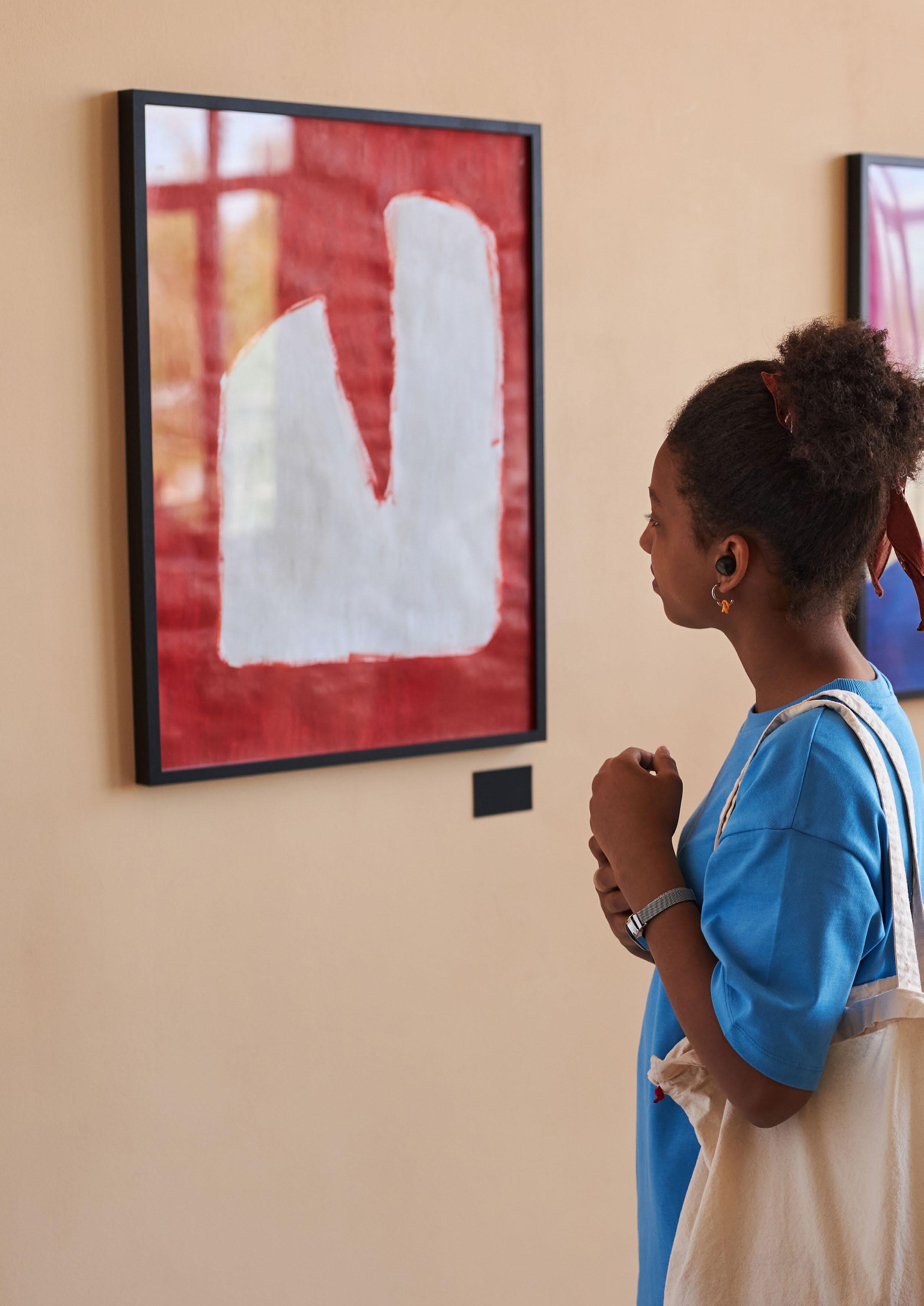
30
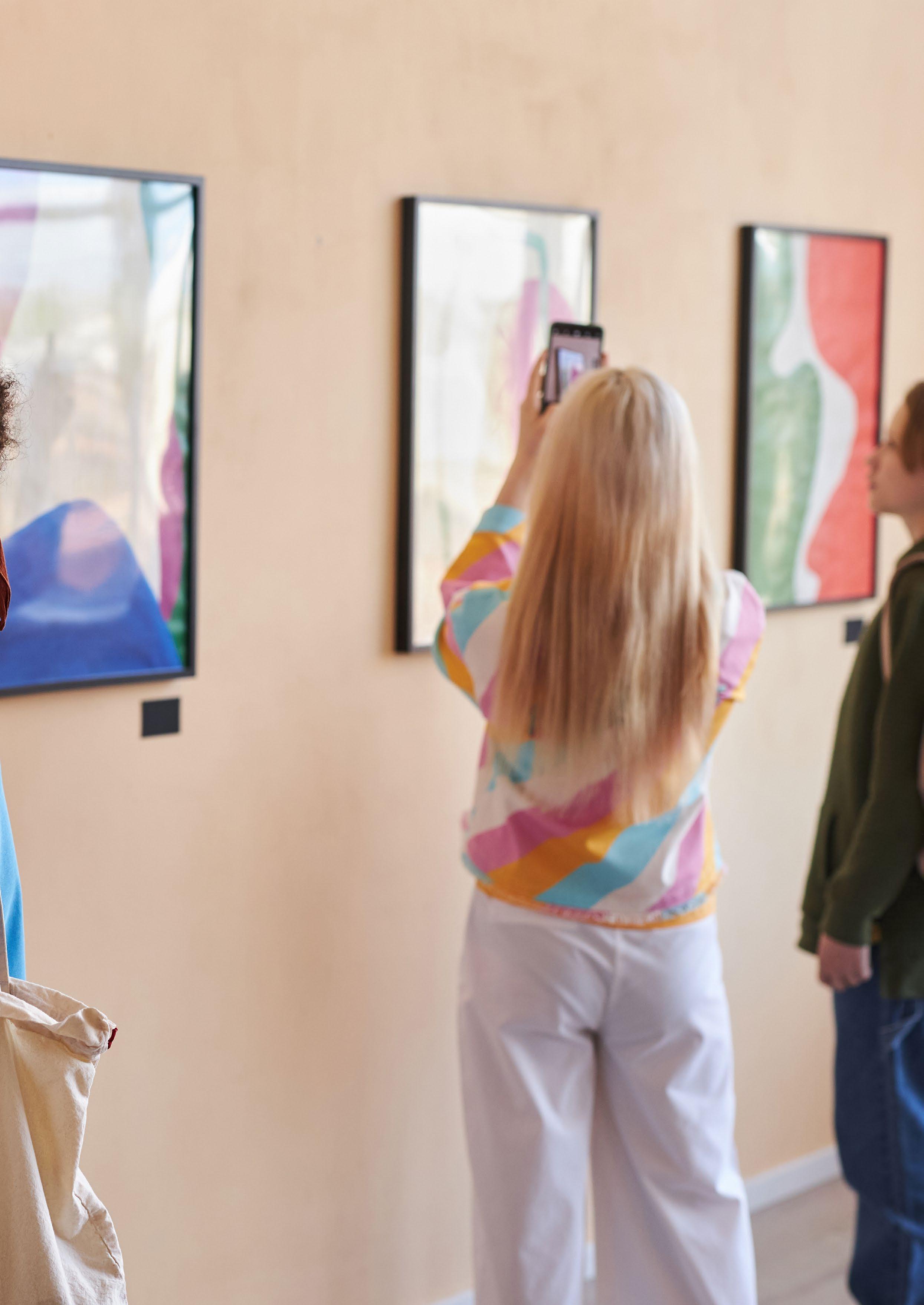



Designed & Printed by Printing Services, University of the West of Scotland University of the West of Scotland is a registered Scottish charity. Charity number SC002520 Photographic images sourced from istock.com




















